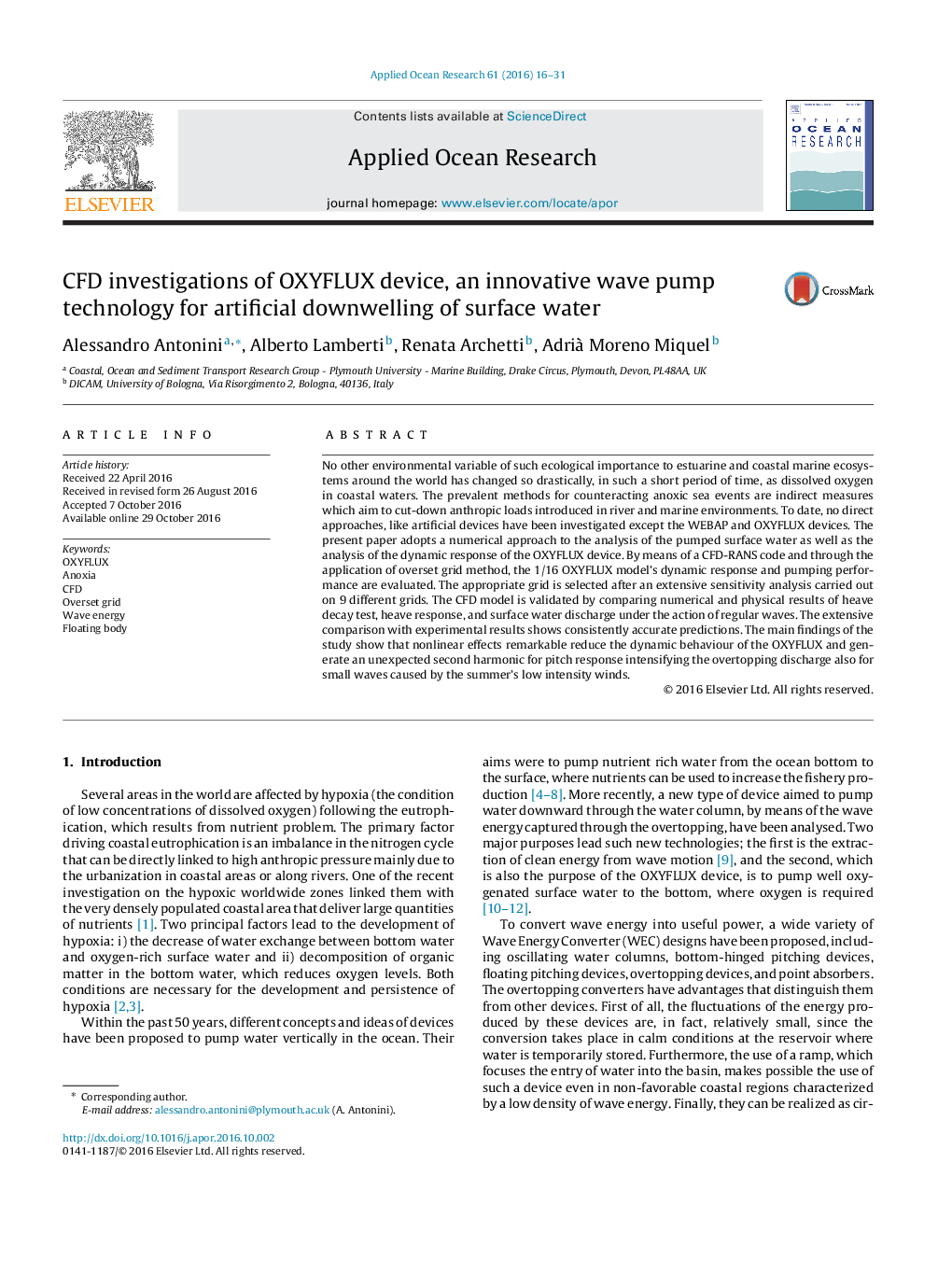| Article ID | Journal | Published Year | Pages | File Type |
|---|---|---|---|---|
| 5473327 | Applied Ocean Research | 2016 | 16 Pages |
Abstract
No other environmental variable of such ecological importance to estuarine and coastal marine ecosystems around the world has changed so drastically, in such a short period of time, as dissolved oxygen in coastal waters. The prevalent methods for counteracting anoxic sea events are indirect measures which aim to cut-down anthropic loads introduced in river and marine environments. To date, no direct approaches, like artificial devices have been investigated except the WEBAP and OXYFLUX devices. The present paper adopts a numerical approach to the analysis of the pumped surface water as well as the analysis of the dynamic response of the OXYFLUX device. By means of a CFD-RANS code and through the application of overset grid method, the 1/16 OXYFLUX model's dynamic response and pumping performance are evaluated. The appropriate grid is selected after an extensive sensitivity analysis carried out on 9 different grids. The CFD model is validated by comparing numerical and physical results of heave decay test, heave response, and surface water discharge under the action of regular waves. The extensive comparison with experimental results shows consistently accurate predictions. The main findings of the study show that nonlinear effects remarkable reduce the dynamic behaviour of the OXYFLUX and generate an unexpected second harmonic for pitch response intensifying the overtopping discharge also for small waves caused by the summer's low intensity winds.
Related Topics
Physical Sciences and Engineering
Engineering
Ocean Engineering
Authors
Alessandro Antonini, Alberto Lamberti, Renata Archetti, Adrià Moreno Miquel,
